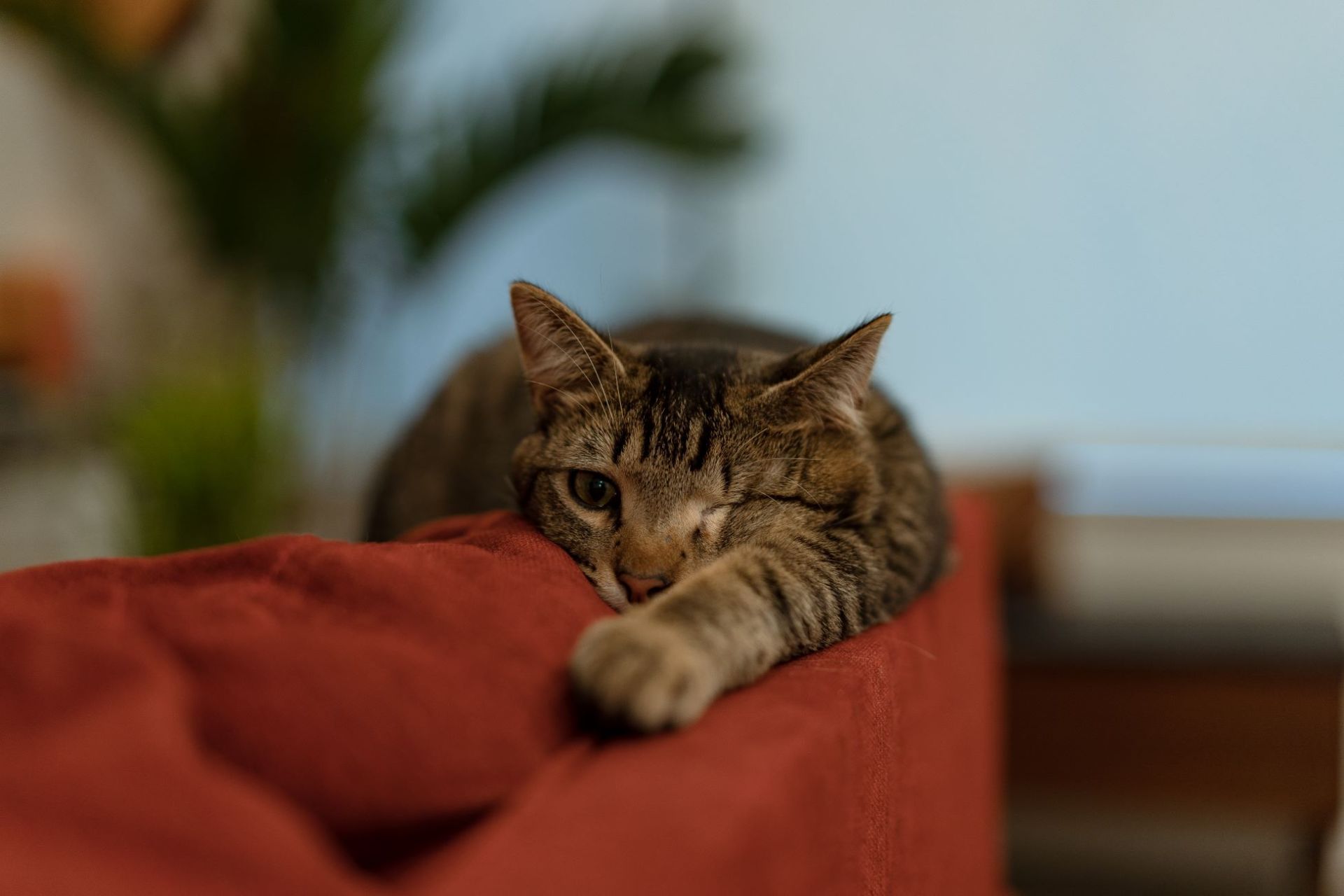Why Do They Do It?
Cats scratch for many reasons. Your cat may scratch to:
- Remove the dead outer layer of their claws.
- Mark their territory by leaving both a visual mark and a scent (they have scent glands on their paws).
- Stretch their bodies and flex their feet and claws.
- Work off energy.
Because scratching is a normal behavior, it is unrealistic to try to prevent cats from scratching. Instead, redirect the scratching onto acceptable objects.
Tools to Redirect Your Cat
You must provide objects for scratching that are appealing and convenient from your cat’s point of view.
We offer virtual Cat Training Classes! Check out our many options – from introducing your new cat/kitten into the home, stopping unwanted behavioral issues to taking your cat/kitten on hikes and adventures and more! We also have virtual private training available for cats and kittens.
You must provide objects for scratching that are appealing and convenient from your cat’s point of view.
- Observe the physical features of the inappropriate objects that your cat is currently scratching:
- Where are they located?
- What texture do they have?
- Are they horizontal or vertical?
- How tall are they?
Find scratching posts (or other items that are appropriate for scratching) that resemble the inappropriate objects. Place the appropriate items near the areas she’s already using to scratch. Make sure they are stable and won’t fall over or move around when she uses them.
Temporarily cover the inappropriate objects with something your cat may avoid: double-sided sticky tape, aluminum foil, or a plastic carpet runner with the raised side up. You could also try an odor repellant (citrus, citronella, etc.).
Try to keep the appropriate scratching items as close to your cat’s preferred scratching locations as possible. Once your cat is consistently using the appropriate items, they can be moved very gradually (no more than three inches each day) to a more suitable location for you.
FAQ’s
NO! Scratching is a NORMAL, NECCESARY and HEALTHY behavior for cats. Focus on providing appealing scratching posts and rewarding your cat for using them. Giving your cat rewards and attention for scratching HER posts is by far the best way to ensure she continues to scratch the correct things.
Clipping your cat’s claws will help prevent them from becoming snagged in carpets and fabrics.
Begin by gently petting her legs and paws while giving her a treat. Gradually increase the pressure so that petting becomes gentle squeezing. Continue with the treats until your cat tolerates this kind of touching and restraint. It may take a little longer if she’s not used to having her legs or paws handled.
When you’re ready to trim her claws, apply a small amount of pressure to her paw—with your thumb on top of her paw and your index finger underneath— until a claw is extended. You should be able to see the “quick,” which is a small blood vessel. Don’t cut into this pink portion, as it will bleed and be painful for your cat. Just trim the sharp tip of the claw (the hook).
There are several types of claw trimmers designed especially for pets. These are better than your own nail clippers because they won’t crush the claw. Until you and your cat have become accustomed to the routine, one claw or foot a day is enough of a challenge. Don’t push to do all of them at once, or you’ll both have only negative memories of clippers!
Need Help?
Call our free Pet Behavior Help Line (503) 416-2983.








